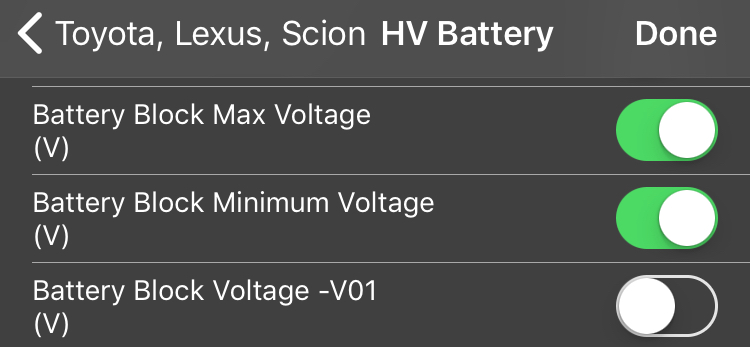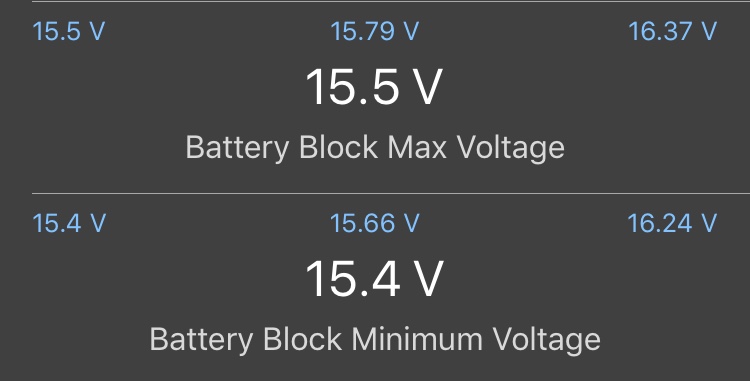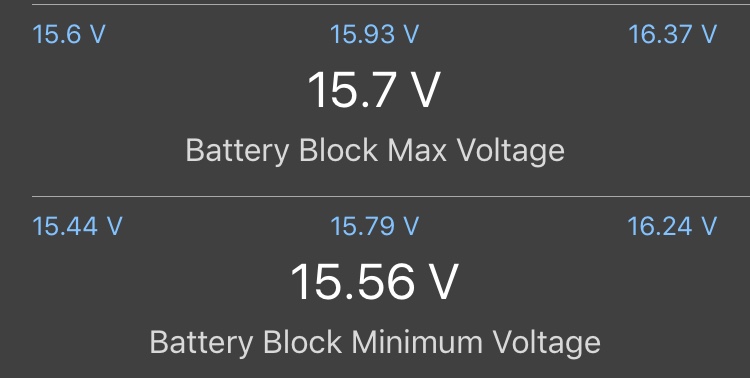Hybrid car batteries are reliable but eventually wear out. I have a 2005 Prius with over 250,000 miles and wanted to see if there was a way to see how the hybrid battery was doing. The normal 12 volt battery has been replaced 4 times but the hybrid battery has worked fine.
Cars in the last 20 years have a common diagnostic port called OBD-II that mechanics use to ask the car computers what is wrong. When a check engine light is on, this is the port they check. There are a variety of products on the market that allow consumers to see this same information through a smartphone or laptop.
Five things are needed to assess hybrid battery health; an ODB-II hardware connection, software to read/write to ODB-II, car-specific PID codes and calculations, and knowledge of how to interpret the resulting data. The cost of software and equipment is less than $50 if you have a smartphone.
ODB-II hardware connection
There are numerous connections to ODB-II cost from $20 to $2000. The $99 Automatic connector is a consumer friendly way to wirelessly connect a smartphone to your car. The app does a lot of things and supports other apps both on the phone and online.
Software to read/write
OBC Fusion App is an advanced app that works with iOS and Android. The app costs $10 and a $10 add-on is required to read the Toyota codes. Torque is an option for Android.
Car-specific PID codes
If you use OBC Fusion and the Toyota add-in, you don’t need to know these specifics. PriusChat has PID codes with different generations of the Prius. Writing PID codes incorrectly to the car may cause issues so for battery health, we will stick to these two measurements.
| Name | ShortName | ModeAndPID | Torque App Equation | Min Value | Max Value | Units | Header |
| HV Battery Block Lowest Volt | HVB Min V | 21D0 | (2.56 * J) + (0.01 * K) – 327.68 |
0 |
15 |
Volt | 7E3 |
| HV Battery Block Highest Volt | HVB Max V | 21D0 | (2.56 * M) + (0.01 * N) – 327.68 |
0 |
23 |
Volt | 7E3 |
Knowledge of battery state
According to Predictive Analysis of Prius battery failure, the state of the battery may be derived by the difference between the highest voltage bank and lowest voltage bank.
0.20V = 100% acceptable efficiency
0.45V = 75% acceptable efficiency
0.70V = 50% acceptable efficiency
0.95V = 25% acceptable efficiency
1.20V = 0% acceptable efficiency – bad battery soon to need replacement
Specific Steps
- Buy and install a ODB-II scanner ($28). I used the TONWON OBDII Bluetooth Scanner after finding the Automatic ODBII scanner wouldn’t get extended codes. Before purchasing make sure the scanner works with the app you intend to use.
- Buy and install the app. The OBC Fusion App is $10 and requires a Toyota add-in purchase inside the app ($10) to read the extended codes.
- Turn on the car and click Connect within the OBC Fusion app.
- Click Diagnostics, PID Values, Menu, Select PIDs, Toyota-Lexus-Scion. This allows you to pick what you want to monitor.
- Click HV Battery, then turn on Battery Block Max Voltage and Battery Block Min Voltage. Also turn on Battery State of Charge for fun.

- You can drive around and see the voltage change. When you are at a stop and the ICE engine is off, take a snapshot of the screen or write down the 2 voltages. Do this several times when the battery is near fully charged and when low. Don’t take readings while the engine is on or your are braking. Some places recommend putting the car in reverse with the brake on and the ICE engine off to get better readings. Here are my readings;



- For the readings you made, subtract the minimum voltage from the maximum. In the above example, the difference is between .09 and .14 volts.
- Use the above table to see the health of your battery. In the above example, the table indicates the battery is still 100% efficient even after 250k miles.
References
OBC Fusion App for iOS
OBD Fusion User-Defined PIDs
| Name | ShortName | ModeAndPID | Torque App Equation | Min Value | Max Value | Units | Header |
| State Of Charge | HV SOC | 21C3 | 0.392 * S |
40 |
80 |
% | 7E2 |
| VL-Voltage Before Boosted | HV Before Boost | 21C4 | 2 * D |
0 |
510 |
Volt | 7E2 |
| VH-Voltage After Boosted | HV After Boost | 21C4 | 2 * E |
0 |
765 |
Volt | 7E2 |
| HV Battery State of Charge | HV SOC | 21CE | 0.5 * A |
40 |
80 |
% | 7E3 |
| HV Battery Current | HV Current | 21CE | (2.56 * B) + (0.01 * C) – 327.68 |
-100 |
100 |
Amp | 7E3 |
| Battery Power (hp) | HV Power | 21CE | ((2.56 * B) + (0.01 * C) – 327.68) * ((2.56 * (D + F + H + J + L + N + P + R + T + V + X + Z + AB + AD)) + (0.01 * (E + G + I + K + M + O + Q + S + U + W + Y + AA + AC + AE)) – 4587.52) * 0.001341 |
-36 |
36 |
hp | 7E3 |
| HV Battery Block-01 Voltage | HV Block1 | 21CE | (2.56 * D) + (0.01 * E) – 327.68 |
0 |
18 |
Volt | 7E3 |
| HV Battery Block-02 Voltage | HV Block2 | 21CE | (2.56 * F) + (0.01 * G) – 327.68 |
0 |
18 |
Volt | 7E3 |
| HV Battery Block-03 Voltage | HV Block3 | 21CE | (2.56 * H) + (0.01 * I) – 327.68 |
0 |
18 |
Volt | 7E3 |
| HV Battery Block-04 Voltage | HV Block4 | 21CE | (2.56 * J) + (0.01 * K) – 327.68 |
0 |
18 |
Volt | 7E3 |
| HV Battery Block-05 Voltage | HV Block5 | 21CE | (2.56 * L) + (0.01 * M) – 327.68 |
0 |
18 |
Volt | 7E3 |
| HV Battery Block-06 Voltage | HV Block6 | 21CE | (2.56 * N) + (0.01 * O) – 327.68 |
0 |
18 |
Volt | 7E3 |
| HV Battery Block-07 Voltage | HV Block7 | 21CE | (2.56 * P) + (0.01 * Q) – 327.68 |
0 |
18 |
Volt | 7E3 |
| HV Battery Block-08 Voltage | HV Block8 | 21CE | (2.56 * R) + (0.01 * S) – 327.68 |
0 |
18 |
Volt | 7E3 |
| HV Battery Block-09 Voltage | HV Block9 | 21CE | (2.56 * T) + (0.01 * U) – 327.68 |
0 |
18 |
Volt | 7E3 |
| HV Battery Block-10 Voltage | HV Block10 | 21CE | (2.56 * V) + (0.01 * W) – 327.68 |
0 |
18 |
Volt | 7E3 |
| HV Battery Block-11 Voltage | HV Block11 | 21CE | (2.56 * X) + (0.01 * Y) – 327.68 |
0 |
18 |
Volt | 7E3 |
| HV Battery Block-12 Voltage | HV Block12 | 21CE | (2.56 * Z) + (0.01 * AA) – 327.68 |
0 |
18 |
Volt | 7E3 |
| HV Battery Block-13 Voltage | HV Block13 | 21CE | (2.56 * AB) + (0.01 * AC) – 327.68 |
0 |
18 |
Volt | 7E3 |
| HV Battery Block-14 Voltage | HV Block14 | 21CE | (2.56 * AD) + (0.01 * AE) – 327.68 |
0 |
18 |
Volt | 7E3 |
| Internal Resistance R01 | IR1 | 21D0 | 0.001 * P |
0 |
10 |
Ohm | 7E3 |
| Internal Resistance R02 | IR2 | 21D0 | 0.001 * Q |
0 |
10 |
Ohm | 7E3 |
| Internal Resistance R03 | IR3 | 21D0 | 0.001 * R |
0 |
10 |
Ohm | 7E3 |
| Internal Resistance R04 | IR4 | 21D0 | 0.001 * S |
0 |
10 |
Ohm | 7E3 |
| Internal Resistance R05 | IR5 | 21D0 | 0.001 * T |
0 |
10 |
Ohm | 7E3 |
| Internal Resistance R06 | IR6 | 21D0 | 0.001 * U |
0 |
10 |
Ohm | 7E3 |
| Internal Resistance R07 | IR7 | 21D0 | 0.001 * V |
0 |
10 |
Ohm | 7E3 |
| Internal Resistance R08 | IR8 | 21D0 | 0.001 * W |
0 |
10 |
Ohm | 7E3 |
| Internal Resistance R09 | IR9 | 21D0 | 0.001 * X |
0 |
10 |
Ohm | 7E3 |
| Internal Resistance R10 | IR10 | 21D0 | 0.001 * Y |
0 |
10 |
Ohm | 7E3 |
| Internal Resistance R11 | IR11 | 21D0 | 0.001 * Z |
0 |
10 |
Ohm | 7E3 |
| Internal Resistance R12 | IR12 | 21D0 | 0.001 * AA |
0 |
10 |
Ohm | 7E3 |
| Internal Resistance R13 | IR13 | 21D0 | 0.001 * AB |
0 |
10 |
Ohm | 7E3 |
| Internal Resistance R14 | IR14 | 21D0 | 0.001 * AC |
0 |
10 |
Ohm | 7E3 |
| HV Battery Charge | HV Charge | 21CF | E – 64 |
0 |
50 |
kW | 7E3 |
| HV Battery Discharge | HV Discharge | 21CF | F – 64 |
0 |
50 |
kW | 7E3 |
| Accumulated Time of Battery LOW | HV Batt Low | 21D0 | (256 * B) + C |
0 |
5000 |
Sec | 7E3 |
| Accumulated Time of DC Inhibit | DC Inhibit | 21D0 | (256 * D) + E |
0 |
5000 |
Sec | 7E3 |
| Accumulated Time of Battery Too High | HV Batt High | 21D0 | (256 * F) + G |
0 |
5000 |
Sec | 7E3 |
| Accumulated Time of Hot Temperature | HV Batt Temp High | 21D0 | (256 * H) + I |
0 |
5000 |
Sec | 7E3 |
| NiMH Volt Delta | NiMH Delta | 21D0 | ((2.56 * M) + (0.01 * N) – 327.68) – ((2.56 * J) + (0.01 * K) – 327.68) |
-3 |
3 |
Volt | 7E3 |
| HV Battery Block Lowest Volt | HVB Min V | 21D0 | (2.56 * J) + (0.01 * K) – 327.68 |
0 |
15 |
Volt | 7E3 |
| HV Battery Block # with Min V | HVB Min # | 21D0 | L |
0 |
13 |
Num | 7E3 |
| HV Battery Block Highest Volt | HVB Max V | 21D0 | (2.56 * M) + (0.01 * N) – 327.68 |
0 |
23 |
Volt | 7E3 |
| HV Battery Block # with Max V | HVB Max # | 21D0 | O |
0 |
13 |
Num | 7E3 |